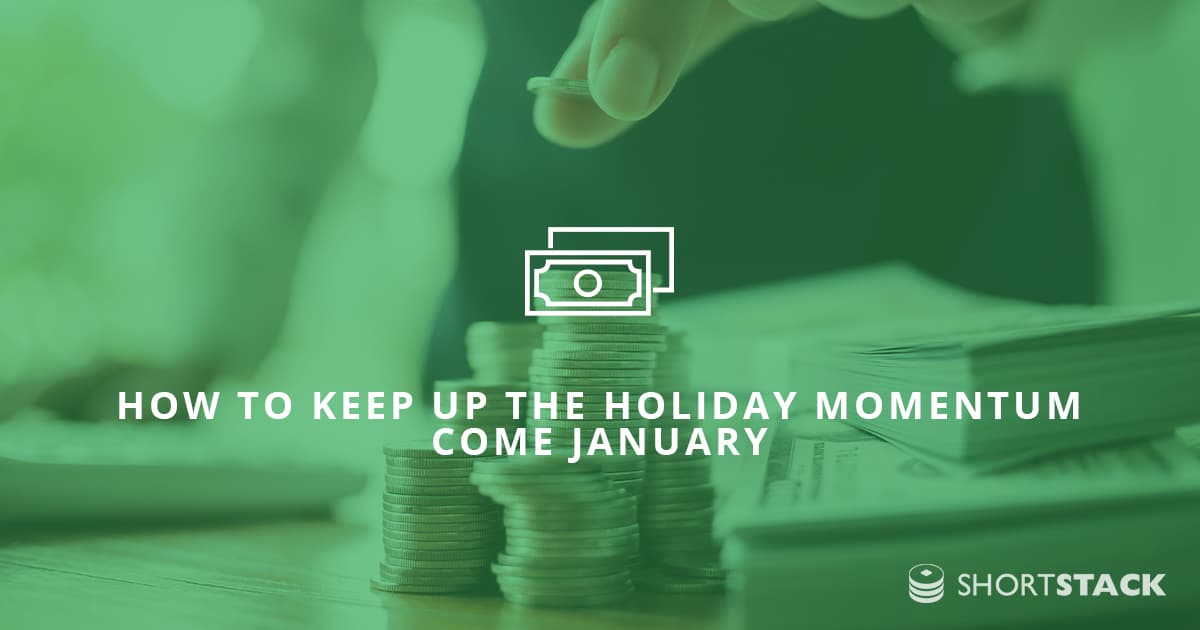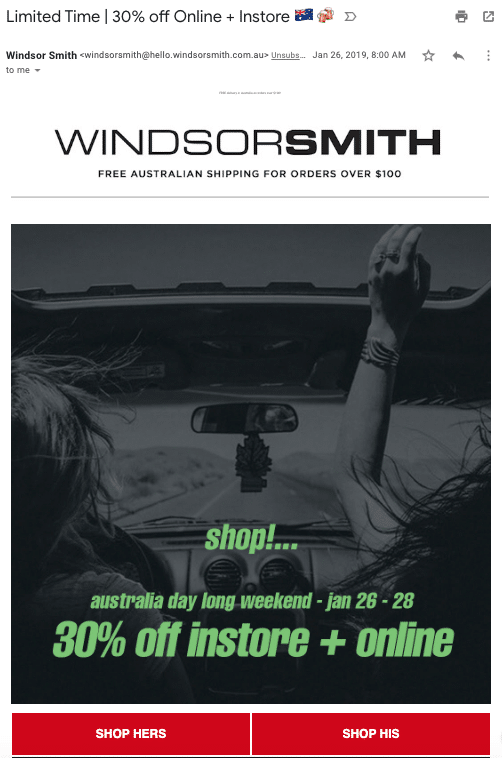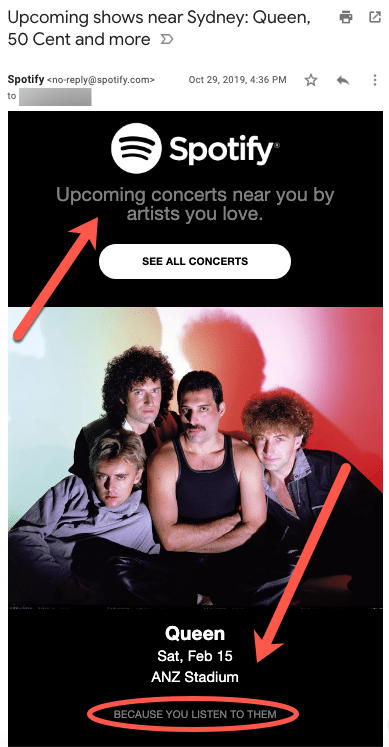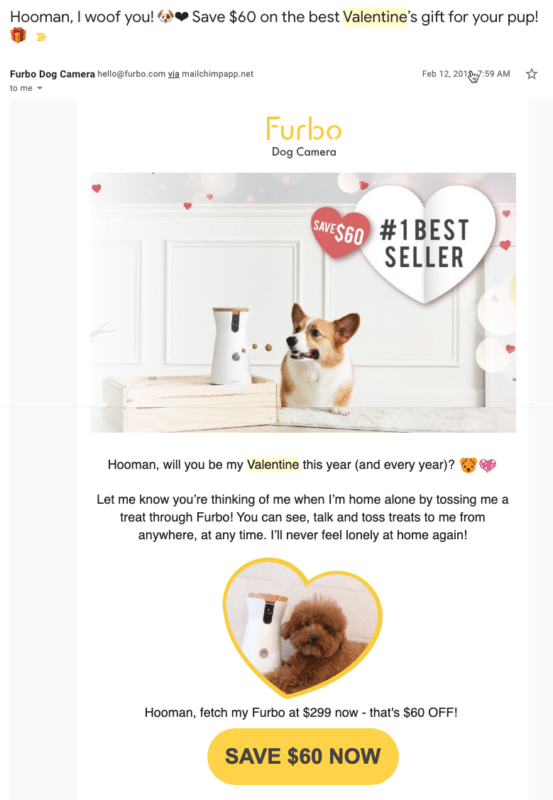How to Keep Up the Holiday Momentum Come January

Learn how to maintain the momentum of holiday sales into the new year with strategies like recreating the holiday buying environment and personalizing marketing.
A trillion dollars…It sounds like a fanciful figure that is more likely to be discussed in an Austin Powers movie than in real life. Unless, of course, you are a part of the US eCommerce industry.

via GIPHYAn analysis of the market conditions in the United States by eMarketer forecasts that holiday eCommerce sales will surpass one trillion dollars in 2019.For some stores, the period between Halloween and Christmas makes up over half of their yearly revenue. So, while a generic country-wide figure predicting sales numbers lacks tangibility for the average business owner, it paints a visceral picture of what this time of year means for anyone in retail.You need to “Make hay while the sun shines,” for lack of a better motto.Unfortunately, too many retail businesses confront an eery black hole of darkness as soon as January hits. The sun stops shining and the hay stops growing. Sales come to an abrupt end and many businesses go into panic mode.Does it need to be like that?Yes, there will be an inevitable drop in sales in January. It’s the nature of retail. But there are certain things you can do to ensure you don’t lose momentum and, instead, hit the new year with optimism.
#1. Recreate the holiday buying environment
Buying behavior is triggered by a series of psychological events that eventually persuade someone to make a purchase. For the most part, retailers don’t need to manufacture these events during the holiday season, because consumers are pre-programmed to buy. All you need to do is create an offer, align with the traditional holiday-season deadlines, and ride the spending wave.When January rolls around, all of the buying triggers that are pre-determined by centuries of consumer behavior have all disappeared. There is no “Black Friday” or a deadline for Christmas shipping in January. To keep the sales momentum going you need to manufacture your own buying triggers.The most important psychological element evident in the holiday season that you should aim to recreate in January is emotional decision-making. Decisions have both positives and negatives for each alternative. This makes it impossible for an individual to rationally determine the best choice, especially when there are several options available.Should I buy a silver or gold watch? Should I use that money to buy a new bag? Maybe I should save the money? Or, could I buy a gift instead? This hypothetical situation is merely scratching the surface of the complexity of consumer decision making.We use emotions and feelings to make choices in all walks of life, every day. Despite convincing ourselves that the choices we make are rational, they are almost always based on emotions, especially at the very last moment before buying something.The holiday season taps into a range of emotions that drive buying behavior. From the “fear of missing out” on a deal to the joy of buying someone a gift, or the guilt of not. When planning your January marketing initiatives, closely consider the emotions that are most likely to persuade your customers to buy and structure your campaigns accordingly.Unlocking the same emotional buying behavior as the holiday season isn’t easy, but there are certain types of promotions that can help. Contests, clearance sales, and product launches are three examples. Much like holiday campaigns, these promotions build anticipation, connect with consumer emotions, and drive action with urgency.Shoe brand, Windsor Smith, made the most of Australia’s national holiday last January, by running a timebound storewide sale that created a sense of urgency with potential customers and generated much-needed interest at a typically low point of the year for eCommerce brands:

#2. Personalize your marketing
It’s no secret that the expectations for personalized marketing experiences are growing by the day. In fact, when it comes to eCommerce, 80% of shoppers are more likely to purchase from a brand that provides personalized experiences.What does this trend in marketing personalization have to do with keeping up the holiday season momentum? It’s all about the data…An increase in traffic, interactions, and sales during the holidays, is directly correlated with a lift in consumer data collection. With the right analytics and data structures in place, you will learn more about your customers during this period than the rest of the year combined.Use this data to reconnect with your customers (or prospects) and offer them personalized marketing experiences. Smart segmentation combined with direct customer feedback arms you with the information you need to position your products in the right way and at the perfect time in the new year.Music streaming service, Spotify, are experts at using data to personalize the marketing experience. For example, they recommend “Upcoming shows near [Insert Your City]” and it’s all based on the music you’ve listened to:

#3. Plan ahead and create leverage with automation
It may sound cliche to plan the year ahead in January, but it’s one of the best ways to keep the bus going in the right direction. What did you learn from the holiday season that you can take into the new year? How will you interact with your new customers as the year progresses?Look to document a 12-month plan for your marketing activity. Yes, part of this will be about attracting new prospects. However, an even more critical part will be about re-engaging with your newly acquired customers to generate referrals and increase their lifetime value. Especially considering it’s far cheaper to encourage a repeat purchase than it is to acquire a new customer.A great way to plan ahead and re-engage with customers is to look at the public events calendar and prepare campaigns, content, and other promotions piggybacking these events. For example, February is host to Valentine’s Day, the Superbowl, and President’s Day. Each month will have an event or two which may be a good excuse to get in touch with your customers and offer them something of value.With the help of marketing automation, you can pre-schedule all of these customer touchpoints in advance. By doing this in January, you reduce the chance of getting swept up in the new year and neglecting your newly acquired customers. Automating a large portion of this activity also creates leverage for your team to develop strong bonds with customers and improve the effectiveness of the business in other areas.Here is a pre-planned email campaign from pet camera creator Furbo that capitalizes on Valentine’s Day. I received this email after purchasing one of their products during the holiday season the year prior:

Conclusion
It’s one thing to “Make hay while the sun shines” from October to December, but what happens next?It’s naive to think that everything will simply fall into place if your holiday sales numbers are impressive.
More often than not, this spike in spending can mask other more concerning issues in a business that are uncovered when the new year begins.As you prepare for 2020, commit to maintaining the momentum.
Make the most of the data you collect, personalize the experience for your customers, and create leverage with technology and smart forward planning.Are you ready for 2020? Don’t let it slip away before it begins.
Create your first contest now
Get Started Today. It’s free and we don’t need your credit card.




